Table of Contents
Walk into a tattoo shop today, and you'll likely see flash sheets featuring dragons, koi fish, and cherry blossoms. These aren't just random cool pictures; they are deeply rooted in the tradition of tattoo designs Japan calls Irezumi. For centuries, this ink has told stories on skin, carrying layers of meaning often lost in translation outside of Japan. It's a world far more complex than just selecting a cool image off the wall. There's history etched into every line, symbolism woven into every color choice. This article pulls back the curtain on the fascinating world of tattoo designs Japan originated. We'll skip the surface-level stuff and dive into the actual history, understand what those iconic images truly represent, and look at the different styles that make up this rich art form. Whether you're considering getting one yourself or just curious about the cultural significance, understanding the depth behind these powerful visuals is key. Let's explore the stories inked beneath the surface.
Beyond the Waves: Unpacking Japanese Tattoo Designs
Beyond the Waves: Unpacking Japanese Tattoo Designs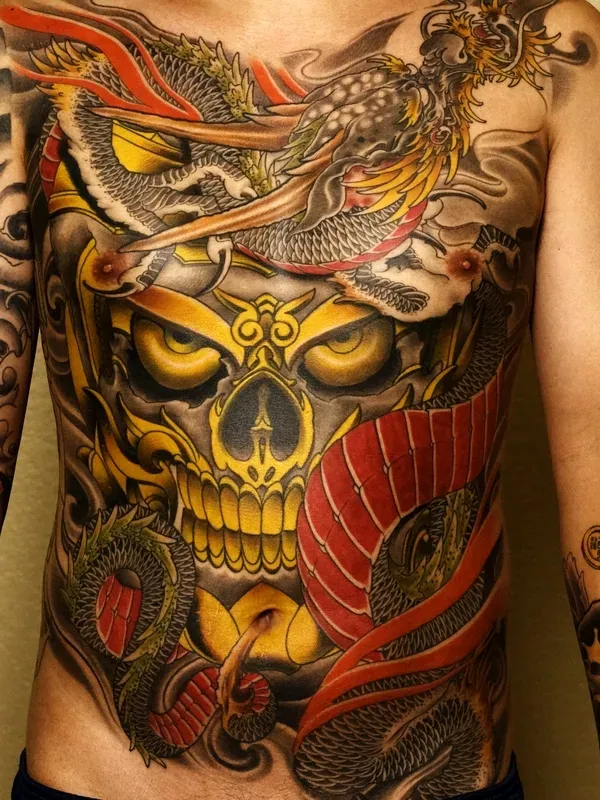
More Than Just Ink: The Deep Currents Below the Surface
Alright, let's cut to the chase about tattoo designs Japan made famous. You see a stunning backpiece with a dragon and clouds, maybe a sleeve with a fierce tiger. It looks cool, sure, but calling it *just* a cool picture is like calling a samurai sword *just* a sharp stick. These aren't casual doodles. They are deliberate compositions, steeped in centuries of history, mythology, and specific rules. Every element, from the direction a wave flows to the number of claws on a dragon, carries weight. Ignoring that context misses the entire point of traditional Japanese tattoos.
The Grand Scale: A Commitment Etched in Skin
Getting traditional tattoo designs Japan style, known as Irezumi, isn't a quick stop at the local parlor for a tiny ankle piece. We're talking about large-scale work, often covering significant portions of the body – backs, sleeves, legs, even full body suits that leave a central panel untouched. This requires immense dedication from both the artist and the person getting tattooed. It's a process that takes years, involves significant pain, and costs a considerable amount of money. It's a serious commitment, a visual autobiography etched onto the skin, not a spontaneous decision made after a couple of beers.
Here's a quick look at some common motifs you'll find in tattoo designs Japan style and their general associations:
- Koi Fish: Perseverance, strength, overcoming adversity (especially when swimming upstream or transforming into a dragon).
- Dragon: Power, wisdom, benevolence, control over elements like water and wind.
- Tiger: Strength, courage, protection against evil spirits.
- Phoenix (Hō-ō): Immortality, rebirth, resilience, good fortune.
- Cherry Blossoms (Sakura): Beauty, transience of life, mortality.
Ink & History: The Roots of Irezumi in Japan
Ink & History: The Roots of Irezumi in Japan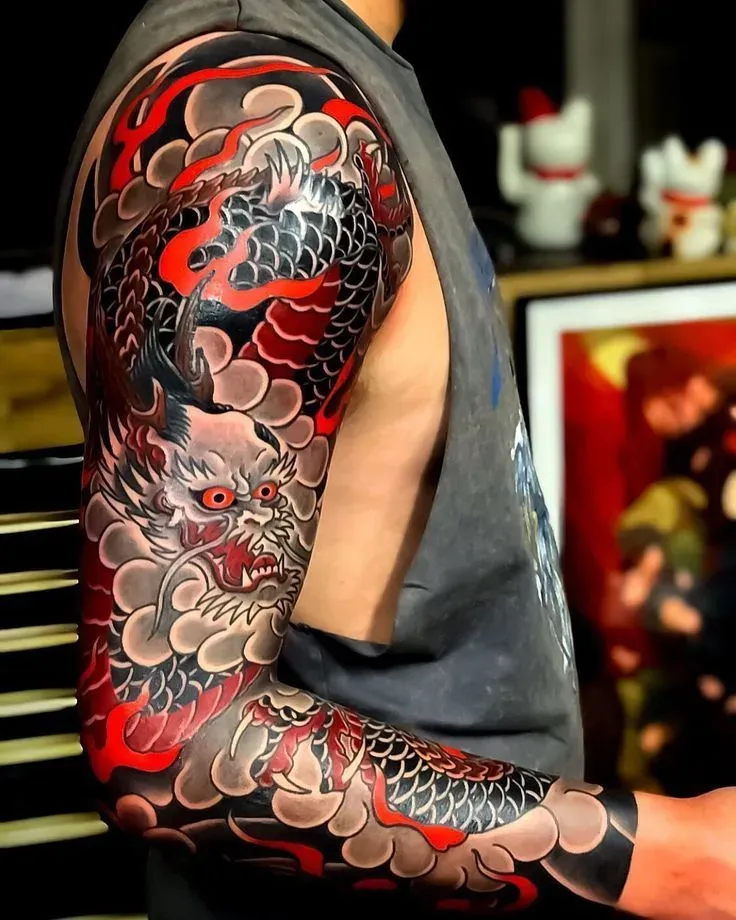
So, where did this whole thing start? Tattooing in Japan isn't some recent trend. It goes way back, centuries actually. Early forms were used for marking criminals or for spiritual and decorative purposes in indigenous cultures like the Ainu. But the Irezumi we recognize today, the large-scale, intricate body art, really started taking shape during the Edo period (1603-1868). This was a time of strict social order, and surprisingly, tattooing flourished among the lower classes – firefighters, laborers, even gamblers. It was a way to show loyalty, status within a group, or simply express oneself when other forms of expression were limited. Think of it as a rebellion etched into the skin, a visible statement in a society that demanded conformity. Woodblock prints from this era, especially those depicting heroes from the Suikoden (Water Margin) novel, heavily influenced the motifs and style, turning skin into a canvas for epic tales.
Decoding the Canvas: Popular Japanese Tattoo Designs and Symbolism
Decoding the Canvas: Popular Japanese Tattoo Designs and Symbolism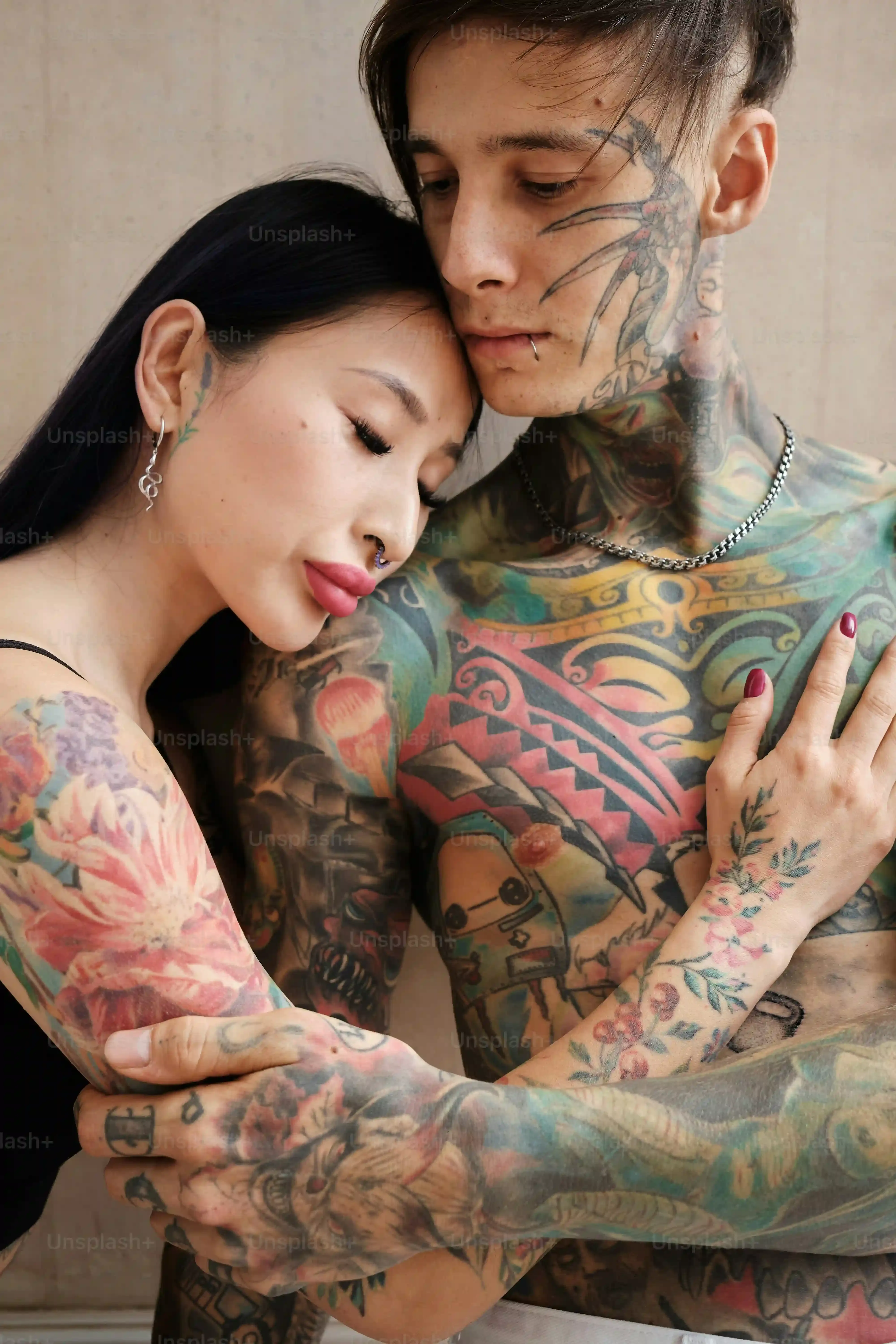
The Dragon's Tale: Power, Wisdom, and the Elements
When you look at traditional tattoo designs Japan offers, the dragon is hard to miss. These aren't the fire-breathing hoarders of European lore. Japanese dragons, or Ryū, are typically benevolent creatures, often associated with water and clouds. They symbolize immense power, wisdom, and the ability to control the elements. A dragon with three claws is common in Japan, while five claws historically linked to the Emperor of China. The movement is key; a dragon ascending often signifies ambition and reaching for the heavens, while one descending might represent bringing blessings to earth. Pay attention to the details – the scales, the whiskers, the pearl they often clutch – each element adds another layer to the narrative etched onto the skin.
The Koi's Journey: Perseverance Against the Current
Another cornerstone of traditional tattoo designs Japan is known for is the koi fish. This isn't just a pretty fish swimming in a pond. The koi is a powerful symbol of perseverance, strength, and overcoming obstacles. The legend says that if a koi can swim upstream and climb the waterfalls at the Dragon Gate on the Yellow River, it transforms into a dragon. This myth makes the koi a potent metaphor for aspiration and achieving one's goals through hard work and determination. The color of the koi can also add meaning; a red koi might symbolize love or energy, while a black koi can represent overcoming difficulties.
Motif | Primary Symbolism | Associated Elements/Meaning |
|---|---|---|
Dragon (Ryū) | Power, Wisdom, Benevolence | Water, Clouds, Control of Elements, Imperial Power (number of claws) |
Koi Fish | Perseverance, Strength, Aspiration | Swimming upstream (overcoming adversity), Transformation (into dragon), Specific colors (love, energy, etc.) |
Tiger (Tora) | Strength, Courage, Protection | Wind (often paired with), Defending against evil, Solitary power |
Phoenix (Hō-ō) | Immortality, Rebirth, Resilience | Fire, Good Fortune, Harmony, The Imperial Household |
Beyond the Main Characters: Adding Depth with Background and Flora
While the main figures like dragons and koi grab attention, the background elements in tattoo designs Japan are just as crucial. They're not just filler. Waves (Nami) often represent the ebb and flow of life, power, or even chaos, depending on their intensity. Clouds (Kumo) can signify change, the divine, or simply act as a space filler that helps structure the design. Flowers also play a significant role. Cherry blossoms (Sakura) are perhaps the most famous, symbolizing the fleeting beauty of life and mortality – a poignant reminder of impermanence. Peonies (Botan) represent wealth, prosperity, and masculinity, often paired with powerful animals. Chrysanthemums (Kiku) symbolize perfection, longevity, and rejuvenation.
Choosing Your Mark: What to Know Before Getting a Japanese Tattoo Design
Choosing Your Mark: What to Know Before Getting a Japanese Tattoo Design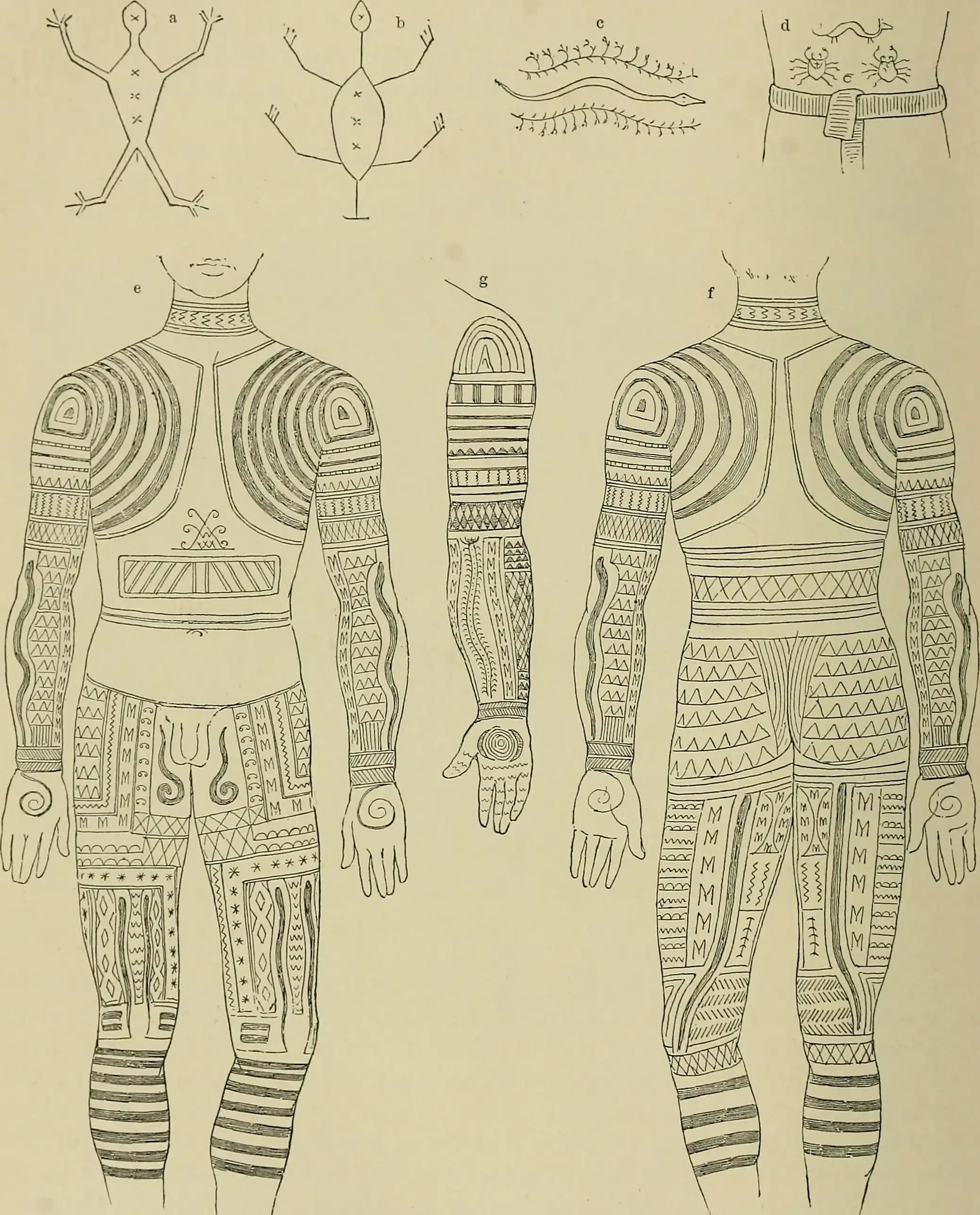
Choosing Your Mark: More Than Just Picking a Picture
Alright, so you've been bitten by the bug and are thinking about getting a Japanese Tattoo Design. Hold up a second. This isn't a walk-in situation for a quick butterfly. A proper Japanese Tattoo Design, especially the large-scale Irezumi, is a serious undertaking. Your first mission? Find an artist who lives and breathes this stuff. Someone who understands the history, the symbolism, the flow (called *nagare*), and the techniques. Don't just pick the guy with the coolest Instagram filter. Look at their healed work. Does the background look like water or just wavy lines? Do the figures have life? Expect this to take time, multiple sessions stretched over months, maybe even years, depending on the size. And yeah, it's going to cost a good chunk of change. This isn't impulse buy territory; it's an investment in a piece of art that tells a story on your skin.
Your Burning Questions About Japanese Tattoo Designs, Answered
Your Burning Questions About Japanese Tattoo Designs, Answered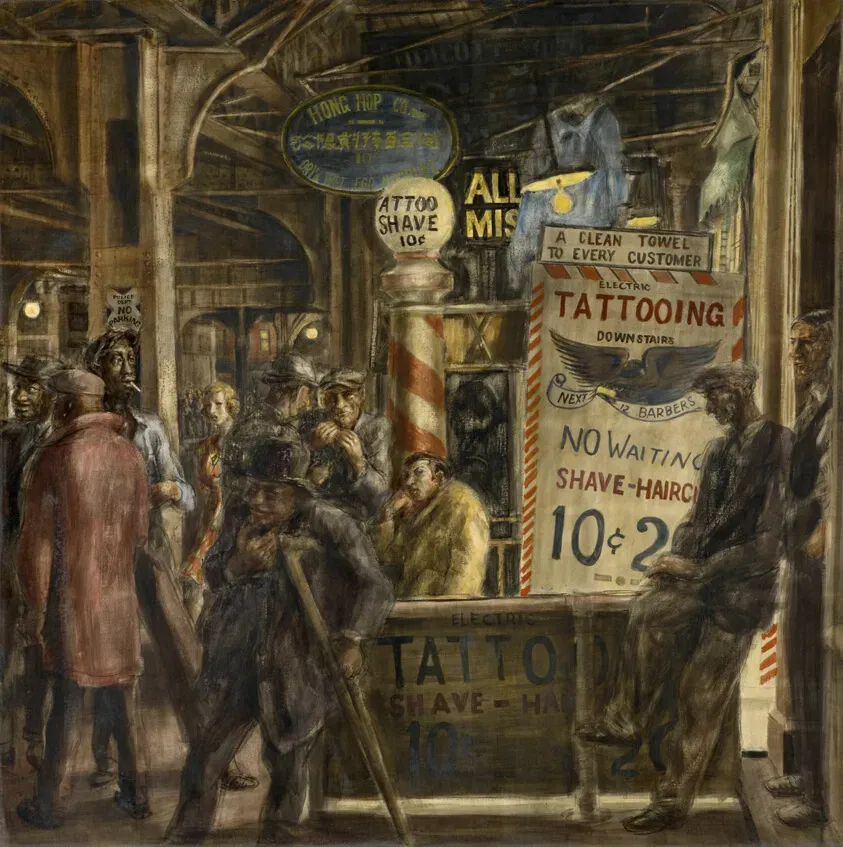
Does Getting a Japanese Tattoo Design Hurt More?
Let's be real. Getting any tattoo involves needles poking your skin repeatedly. It's not a spa treatment. Traditional Japanese tattoo designs, especially large-scale Irezumi done with the tebori (hand-poking) method, can be intense. Tebori is often described as a rhythmic, deep pressure, different from the buzzing of a machine. Some areas, like ribs or directly over bone, are universally unpleasant regardless of style. While pain tolerance varies wildly from person to person, committing to a full backpiece or sleeve means you'll spend significant time in the chair. Expect discomfort, plan for it, and don't go in thinking it's a walk in the park. It's part of the process, part of the commitment to wearing these incredible tattoo designs Japan has perfected over centuries.
Is it Okay for Someone Not Japanese to Get a Japanese Tattoo Design?
This is a question that comes up a lot, and honestly, it's complicated. Historically, Irezumi was deeply tied to Japanese culture and specific social groups. Wearing these symbols without understanding their meaning or history can feel disrespectful to some. However, many contemporary Japanese tattoo artists are willing to work with non-Japanese clients, provided they approach the art with genuine respect, do their homework on the symbolism, and commit to the process. It's not about claiming the culture, but about appreciating the art form and its history. Think of it like appreciating classical music or learning a martial art – you can participate and respect the tradition without being born into the culture. The key is education and working with an artist who respects the tradition themselves.
Here are a few more quick answers to common questions about Japanese tattoo designs:
- **How long does a large piece take?** Years, often spread across dozens of sessions. Patience is key.
- **Is Irezumi illegal in Japan?** No, it's not illegal for tourists or residents to have tattoos. However, visible tattoos can still restrict entry to some places like onsen (hot springs), gyms, or even certain restaurants due to historical associations with organized crime.
- **What does the background mean?** Background elements like waves, clouds, wind, and rocks provide context, flow, and can symbolize natural forces or the environment the main figures inhabit.
- **Can I mix Japanese and other styles?** While modern artists experiment, traditional Irezumi is a cohesive system. Mixing styles often breaks the visual rules and flow that define the art form.
The Enduring Mark of Japanese Tattoo Designs
So, we've covered the journey from Irezumi's origins to the intricate meanings behind the popular images you see today. Understanding the layers of history, the specific symbolism of a dragon's posture or a koi's direction, reveals that tattoo designs Japan produces are far more than just body art. They are living canvases carrying cultural weight and narrative. While the art form continues to evolve, its core principles of storytelling and deep meaning remain. Approaching a Japanese tattoo design requires respect for its heritage and an understanding that you're wearing a piece of a long, complex tradition.